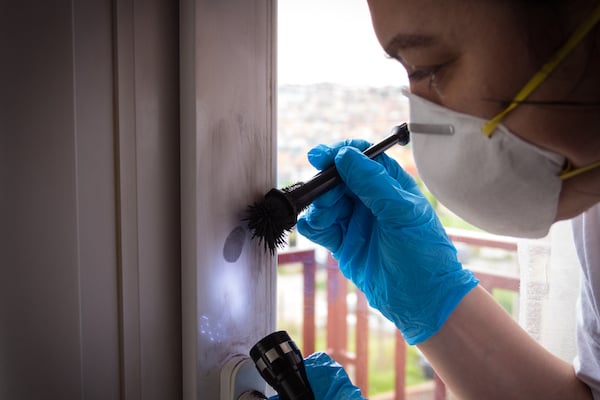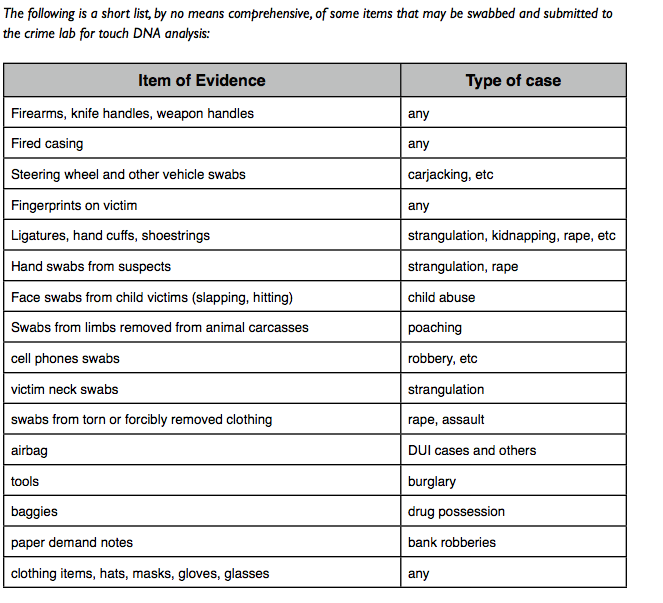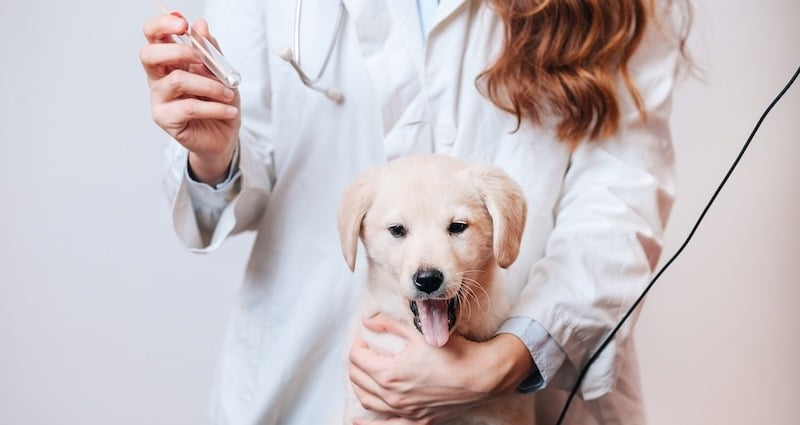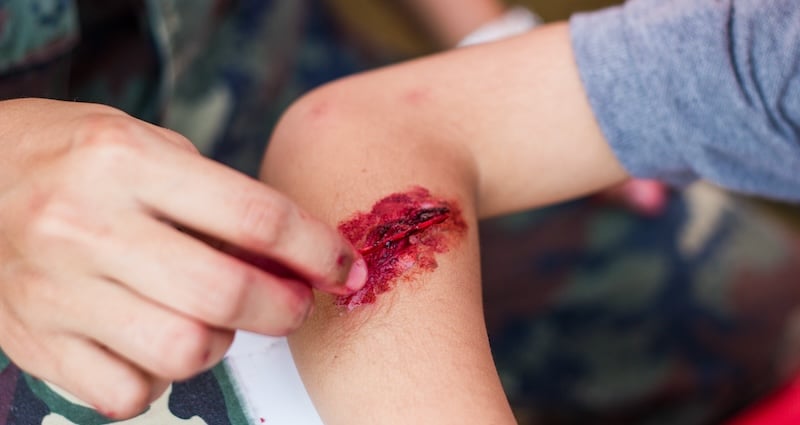
Touch DNA, also known as Trace DNA or Low Copy Number DNA, is an advanced and fairly new crime scene investigation technique used to collect and analyze microscopic transfer cells left behind during the commission of a crime.
DNA-free forensic swabs are essential tools for swabbing surfaces for DNA contamination and collecting Touch DNA samples, from standard cotton tipped swabs to DNA-free transport swabs in transport tubes.
But why is touch DNA so important?
How Touch DNA Works & Why it Matters
Law enforcement professionals call this technology a breakthrough. First, it allows for the collection of evidence where there is a lack of visible DNA (such as blood, semen, hair, or saliva). Second, it can be used on fingerprints that are too smudged or incomplete for fingerprint analysis. And third, prosecutors of many cold cases with samples too small or degraded to prove useful are now re-submitting evidence to labs for Touch DNA analysis.
The process of extracting Touch DNA for forensic analysis involves swabbing, taping, or scraping for trace amounts of epithelial cell-tissue from surfaces such as doorknobs, countertops, windows – and even clothing and food.
This Touch DNA is then amplified using polymerase chain reaction technology to create identical copies that are large enough for proper analysis.
According to Ryan Forensic DNA Consulting, “the amount of DNA needed to yield a full DNA profile with most commercially available amplification kits is approximately 1 nanogram (ng) of DNA and partial profiles can be obtained with even less starting material."
That amounts to about 5-30 skin cells. No wonder police departments across the country are embracing Touch DNA.
Of course, if you want Touch DNA evidence to work for you, it's essential you adhere to specimen collection best practices to avoid compromising a sample.
How to Swab for Touch DNA
- Be sure to wear appropriate personal protective equipment.
- If using a dry swab, extract distilled water from vial using sterile pipette and apply one drop to the side of the tip. Do not use more than one drop, and do not dip the swab into the water.
- If using a self-saturating foam-tipped swab, open and remove swab holding foam tip facing down. Then squeeze handle until it pops, releasing medium into tip.
- Apply tip to sample area and rub using moderate pressure while rotating the swab to ensure the entire swab surface has made contact with the object.
- To avoid compromising the sample by redepositing specimen, do not rotate more than once.
- If using dry swab, allow to air dry then place tip in dry transport tube or vial.
- If using self-saturating foam-tipped swab, gently peel foam tip away from handle and place in sterile container for transport.
- Label the tube or envelope with identifying information.
- Use evidence tape to seal outer packaging. Initial and date for chain of custody verification.
- Store swab at room temperature or transfer to freezer until testing.
One of the main benefits of Touch DNA technology is that it is so sensitive as to be able to place a suspect at the scene of a crime with just a few skin cells extracted from a forensic swab or scraping. Unfortunately, this is also one of the potential drawbacks. Because the tests are so sensitive, crime scene investigators must use care to avoid contamination.
How to Avoid Contamination of Touch DNA
Below are the steps suggested to take in order to minimize Touch DNA contamination at a crime scene:
-
Limit access to the crime scene or evidence.
-
Do not talk over the evidence.
-
Wear Personal Protective Equipment, including face masks.
-
Change gloves frequently after handling evidence.
-
Do not touch areas on evidence that may be sampled for DNA.
-
Collect elimination samples from those who have been in contact with the evidence or scene.
-
Use disposable fingerprint brushes and powder.
-
Clean each crime scene tool coming into contact with evidence.
Other applications for Touch DNA include the following.

Image credit: Ryan, Suzanna, MS. Touch DNA.
Conclusion
For more information on swabbing tools and procedures relating to Touch DNA collection, please don’t hesitate to contact one of our knowledgeable product specialists today.
The pioneers of precision - For over four decades, Puritan Medical Products has mastered the art of crafting bespoke medical swabs. Trust the industry leaders for impeccable quality.
SOURCES:
Ryan, Suzanna, MS. Touch DNA. What is it? Where is it? How much can be found? And, how can it impact my case? A question and answer guide to all things touch DNA. Ryan Forensic DNA Consulting. Originally Retrieved September 3, 2014. Retrieved from new link on February 21, 2019 from: http://ryanforensicdna.com/touchdna/






